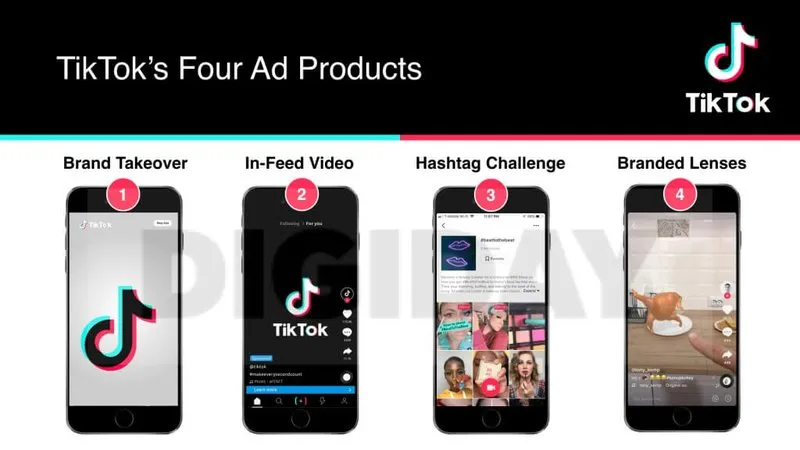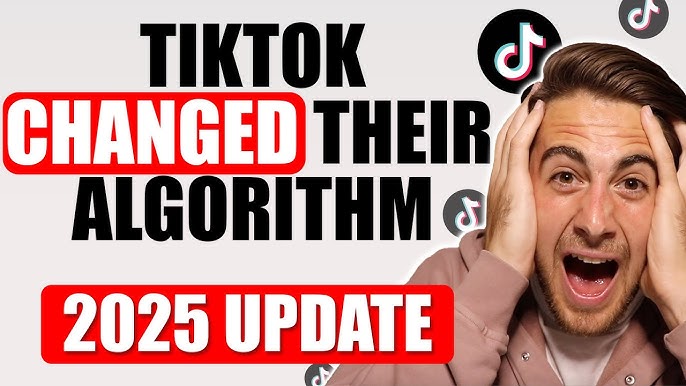Cross-Platform Ad Tracking with TikTok: A Comprehensive Guide
In today’s digital marketing landscape, advertisers must track and analyze the performance of their campaigns across multiple platforms. With the rise of social media, businesses are running campaigns on platforms like Facebook, Instagram, YouTube, Twitter, and TikTok. To make informed decisions, advertisers need to gather data from all these channels and measure the effectiveness of their ads. This is where cross-platform ad tracking comes into play, and TikTok offers several ways for marketers to track their campaigns across platforms.
TikTok’s rapid growth as a key player in the social media space has made it an essential platform for advertisers looking to reach younger, highly engaged audiences. With TikTok’s innovative features and diverse ad formats, it’s a great tool for businesses to increase brand awareness, drive traffic, and generate sales. However, understanding how to track TikTok ads in conjunction with ads on other platforms is essential to optimizing your overall marketing strategy.
In this comprehensive guide, we’ll explore the importance of cross-platform ad tracking, the tools available for measuring TikTok ad performance, and how to integrate TikTok data with other marketing efforts to improve campaign outcomes.
What is Cross-Platform Ad Tracking?
Cross-platform ad tracking refers to the process of monitoring and measuring the performance of ads across multiple advertising platforms. For example, if you’re running an ad campaign on both TikTok and Facebook, cross-platform tracking allows you to track the effectiveness of those ads on each platform and see how they interact with one another. This allows marketers to get a holistic view of their marketing efforts and identify which platform is driving the best results.
Cross-platform ad tracking is essential for brands looking to measure their ROI (Return on Investment) and ensure that their ad spend is being used effectively. By understanding how your TikTok ads are performing in comparison to ads on other platforms, you can allocate your budget in the most efficient way possible.
Why is Cross-Platform Ad Tracking Important for TikTok Ads?
TikTok is one of the most rapidly growing social media platforms in the world, with millions of active users. It has become a popular platform for advertisers, especially those targeting younger audiences. However, like any platform, TikTok should be measured in the context of your overall marketing strategy. Cross-platform ad tracking provides several key benefits:
1. Holistic View of Campaign Performance
By tracking ads across multiple platforms, you can get a clearer picture of how each platform is contributing to your overall marketing goals. With cross-platform tracking, you can see how TikTok ads perform relative to Facebook, Instagram, Google, and other advertising channels. This can help you identify where to focus your resources and which platforms are yielding the best ROI.
2. Better Allocation of Ad Spend
Without cross-platform tracking, you risk overspending on platforms that may not be generating the desired results. By comparing performance across different platforms, you can allocate your ad budget to the channels that provide the highest return.
3. Accurate Attribution
In digital marketing, attribution refers to assigning credit to the marketing touchpoints that lead to conversions. Cross-platform ad tracking enables you to understand which platforms are most responsible for driving conversions, sales, or leads. This is especially important for businesses running multi-channel campaigns, as it helps them understand the full customer journey.
4. Optimize Customer Retargeting
Cross-platform tracking allows you to retarget users who interacted with your ads on TikTok and then visit your website or app. By tracking their behavior across platforms, you can deliver highly relevant retargeting ads that increase the chances of conversions.
5. Improved Campaign Insights
Cross-platform ad tracking helps you uncover deeper insights about your audience. By seeing how users engage with your ads on TikTok, Facebook, and other platforms, you can refine your ad creatives, messaging, and targeting strategies for future campaigns.
TikTok Ad Tracking Tools and Methods
TikTok offers several ways to track ad performance on its platform. However, when it comes to cross-platform ad tracking, marketers often need to use external tools or integrations to pull together the performance data from multiple channels. Below, we’ll discuss the tools and methods that can be used to track TikTok ads in conjunction with other marketing efforts.
1. TikTok Pixel
The TikTok Pixel is a small piece of code that you install on your website or app. It collects data about the actions that users take after clicking on your TikTok ads. This data includes purchases, sign-ups, page views, or other conversions that matter to your business. The TikTok Pixel is an essential tool for tracking the success of your ads and understanding how users engage with your brand after seeing your ad.
The TikTok Pixel is crucial for cross-platform ad tracking because it can integrate with other ad tracking tools like Google Analytics, Facebook Pixel, and more. This way, you can compare the data across platforms and get a clear view of your marketing performance.
Key Features of TikTok Pixel:
- Conversion Tracking: Track specific user actions after they click on your ad (purchases, sign-ups, etc.).
- Custom Events: Set up custom events to track specific behaviors that matter to your business.
- Audience Creation: Create custom audiences based on user actions, which can then be used for retargeting campaigns.
2. TikTok Ads Manager
TikTok Ads Manager is the platform’s native tool for creating, managing, and analyzing ad campaigns. It provides detailed insights into your TikTok ad performance, including metrics like impressions, clicks, conversions, and more. While TikTok Ads Manager is primarily for TikTok ads, it offers integration with Google Analytics and other third-party tools that allow you to measure performance across platforms.
TikTok Ads Manager is particularly helpful when you want to analyze specific campaigns, ad groups, or ads. It allows you to track metrics like:
- Impressions: The number of times your ad is shown.
- Click-through Rate (CTR): The percentage of people who clicked on your ad after viewing it.
- Conversions: The number of users who completed a desired action after interacting with your ad (purchase, sign-up, etc.).
By integrating this data with Google Analytics or other cross-platform tools, you can compare the performance of TikTok ads against ads on other platforms.
3. Third-Party Tracking and Analytics Tools
Several third-party tracking and analytics platforms integrate with TikTok to help you track ad performance across multiple platforms. These tools aggregate data from TikTok, Facebook, Google, Instagram, and other channels to provide a unified view of your marketing performance. Some popular cross-platform tracking tools include:
- Google Analytics: By setting up UTM parameters for your TikTok ads, you can track TikTok traffic alongside traffic from other platforms in Google Analytics. This helps you understand how users are interacting with your website after clicking your ads.
- AdEspresso: AdEspresso is a third-party tool that allows you to create and track campaigns on TikTok, Facebook, and Instagram. It aggregates ad performance data and provides detailed reports on how each platform is performing.
- Kochava: Kochava is a mobile attribution platform that integrates with TikTok to help you track app installs, in-app events, and user behavior across multiple platforms.
- Adjust: Adjust is another mobile measurement tool that allows for cross-platform tracking, helping you measure campaign performance across channels like TikTok, Facebook, and Google.
4. UTM Parameters and Google Analytics
You can use UTM parameters to track TikTok ad traffic within Google Analytics. UTM parameters are tags that you add to the URL in your ad. These parameters help Google Analytics identify where your traffic is coming from and which campaigns or ads led users to your site.
Here’s how you can track TikTok ad traffic using UTM parameters:
- Add UTM parameters to the URLs in your TikTok ad campaigns.
- Track user behavior from TikTok ads within Google Analytics.
- Compare TikTok ad performance with other platforms like Facebook, Instagram, or Google Ads.
This method allows for simple but effective cross-platform tracking and provides insights into how users interact with your content after clicking on ads.
Best Practices for Cross-Platform Ad Tracking with TikTok
Here are a few best practices to ensure you’re effectively tracking your TikTok ads across platforms:
1. Consistent UTM Tagging
When running campaigns across different platforms, it’s important to use consistent UTM tagging. Make sure each ad’s URL includes unique UTM parameters, so you can clearly identify the source, medium, and campaign in Google Analytics.
2. Leverage TikTok’s Integration with Google Analytics
Integrating TikTok with Google Analytics through UTM tracking will provide you with detailed insights into your TikTok traffic and how it performs compared to other marketing channels.
3. Use Cross-Platform Attribution Models
Cross-platform attribution models help assign credit to each marketing channel for the role it plays in driving conversions. Consider using tools like Google Attribution or Facebook Attribution to get a complete view of the customer journey.
4. Optimize Retargeting Across Platforms
By tracking user behavior across TikTok and other platforms, you can retarget users with ads that are more likely to convert. Use data from TikTok Pixel, combined with Facebook Pixel or Google Ads, to create custom audiences for retargeting.
5. Monitor Campaign Metrics Regularly
Cross-platform tracking requires constant monitoring. Be sure to regularly check your metrics to understand how your TikTok ads are performing in comparison to other platforms. Adjust your ad spend based on the data to optimize your campaigns.
Conclusion
Cross-platform ad tracking with TikTok allows advertisers to gain deeper insights into their campaigns, allocate budgets more effectively, and track performance across multiple channels. By using tools like the TikTok Pixel, TikTok Ads Manager, and third-party tracking platforms, marketers can get a unified view of their ad performance across platforms. This helps ensure that you can optimize your campaigns and make data-driven decisions that ultimately lead to better results and ROI.
By following best practices, including leveraging UTM tagging, integration with Google Analytics, and cross-platform attribution models, advertisers can take full advantage of TikTok’s powerful marketing capabilities and create successful, multi-channel advertising strategies in 2025 and beyond.



